The 22nd
LaureateSculpture
Rebecca Horn
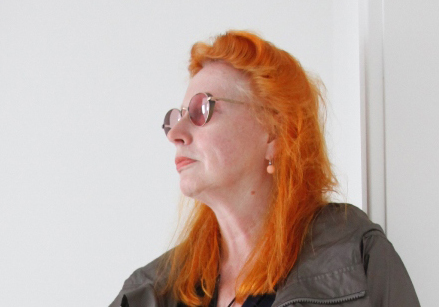
Rebecca Horn has a creativity that is both thoughtful and thought provoking. Her work,whether it be sculpture,poetry,drawing,music,painting,film or photography has a tremendous precision and great logic,with new pieces building on aspects of previous works,exploring and readdressing elements that were examined in different forms,binding all her work together in a consistency of logic. Much of her early work such as Unicorn (1970/72),focuses on the equilibrium between body and space but in later works the human body is replaced by kinetic sculptures that still manage,despite their mechanical origins,to have a sense of life of their own. Through her work,Horn manages to release and refocus the history of the large buildings or spaces where she chooses to work. In Concert in Reverse (1987) in Munster,she works in an old municipal tower that was an execution site during the War. Constantly exploring,Horn searches for ways to break down boundaries of space and time,creating work that hypnotises,captivates and yet at the same time disorientates. A recent installation,Light Imprisoned in the Belly of the Whale (2002) has projected texts accompanied by the vocal and instrumental compositions of Hayden Chisholm,creating a sensory experience of graceful,subtle fragility. In June this year,she established The Moontower Foundation,a creative and meditative space,located next to her workshop,near Frankfurt.
Biography
Rebecca Horn is often referred to as an artist of transformation,whose ever growing body of work consists of poetry,music,sculptures,paintings,films and photographs; all of which develop stories that have welled up from within,reflecting her desire for communication and interaction. As Horn explains,"The people move and the sculptures move,and this brings about an irritation. This causes a certain tension and creates confrontation with the viewer. They react to it and often change their inner self".
Born in Michelstadt,near Frankfurt,Germany,Horn studied Art in Hamburg and London. As a student,she suffered severe lung problems from working unprotected with fibre−glass. In total isolation for a year,she would imagine parts of her own body extending,helping her work; inspiring her to use prosthetic bandages and padded body extensions in her creations.
Much of her early work focuses on the equilibrium between body and space but in later works the human body is replaced by kinetic sculptures that still manage,despite their mechanical origins,to have a sense of life of their own.
Horn's creativity is both thoughtful and thought provoking. There is a tremendous precision to her work,both in terms of the technical functionality and the physical space where the work will be staged. Her drawings for each piece are detailed and thorough and the work itself is executed with exacting precision and ingenuity.
There is also great logic to her work. New pieces build on aspects of previous works,exploring and readdressing elements that were examined in different forms,binding all her work together in a consistency of logic. So,for example,Horn followed the physical experience of her performances with body extensions,masks and feather objects of the 1970s,such as Unicorn (1970/72) with the first kinetic sculptures featured in her films such as The Feathered Prison Fan in Der Eintanzer (1978) or The Peacock Machine in La Ferdinanda (1981).
Many of Horn's works have a strong political message and the 80s and 90s saw her create installations that were not only enormous in size but also in their impact. Through her work,Horn manages to release and refocus the history of the large buildings or spaces where she chooses to work. In Concert in Reverse (1987) in Munster,she works in an old municipal tower that was an execution site during the War and in Mirror of the Night (1998),created in a derelict synagogue in Cologne,she uses the energy of writing to counter historical amnesia.
Constantly exploring,Horn searches for ways to break down boundaries of space and time,creating work that hypnotises,captivates and yet at the same time disorientates. A recent installation,Light Imprisoned in the Belly of the Whale (2002) has wandering texts projected into a black basin of water,accompanied by the vocal and instrumental compositions of Hayden Chisholm,creating a sensory experience of graceful,subtle fragility.
In June this year,she established The Moontower Foundation,a creative and meditative space,located next to her workshop,near Frankfurt.
Chronology
-
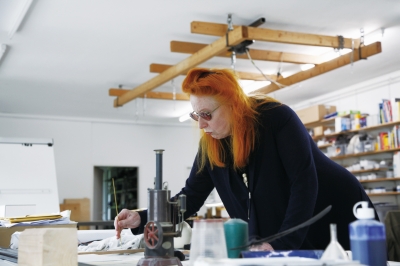
At her studio in Bad Konig, Germany
-
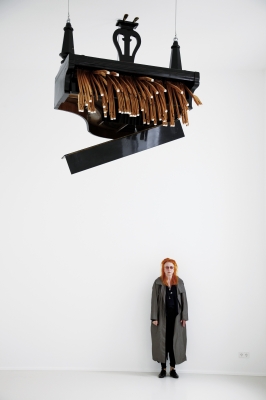
Rebecca Horn and Concert for Anarchy, 1990
-
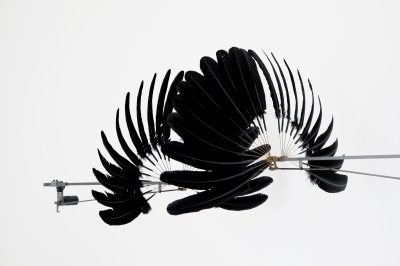
The Raven's Twin, 1997
-
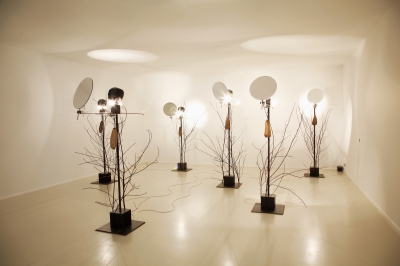
Warriors, 2006
-
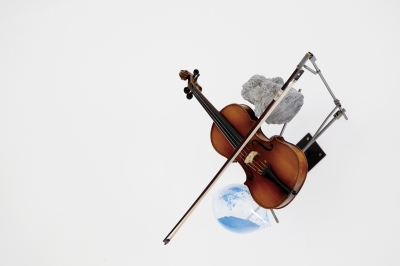
The Blue Sigh, 2009
-
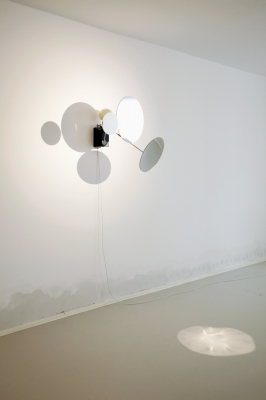
Mirrored in the Ostrich Egg, 2009
-
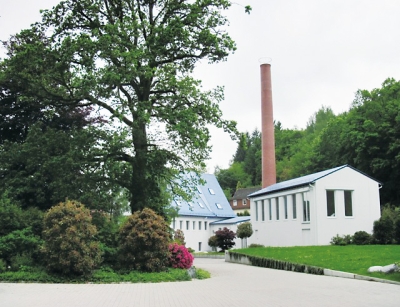
Moontower Foundation

